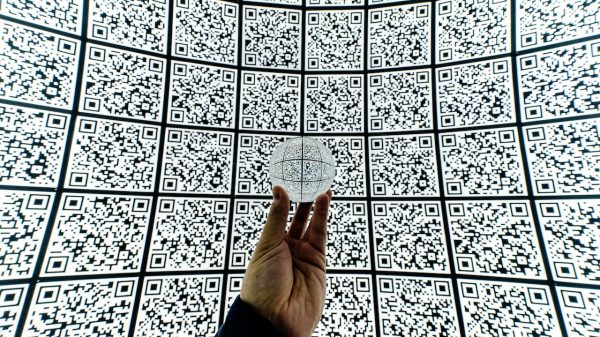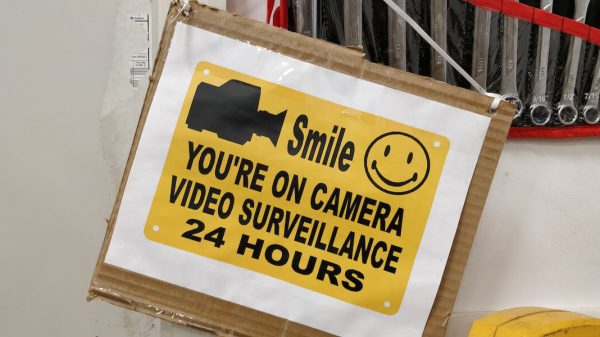“The debate around surveillance in India has primarily been from the lens of facial recognition technology or the use of CCTVs on our streets/schools…this governmental activity is being supplemented by a vast parallel network of private actors being asked to install CCTVs as well, through the orders under Section 144. Therefore, private actors get tacitly co-opted to the state surveillance apparatus, which issue has mostly flown under the radar,” informs a recent report ‘The Use and Misuse of Section 144 CR.P.C’ by advocates Vrinda Bhandari, Abhinav Sekhri, Natasha Maheshwari, and Madhav Aggarwal.
The report offers ground-level analysis of the many ways in which Section 144 of the Code of Criminal Procedure (CrPC) is being misused by authorities in Delhi. The analysis covers a duration of one year (January 1, 2021 – January 1, 2022). The team examined nearly 5400 of the total 6100 Sec 144 orders obtained, mainly through RTI, from each police subdivision in Delhi, which includes 15 districts with their own sub-divisions and police stations.
The general understanding of Sec 144 is that it is invoked for “law enforcement” to prohibit “constitutionally safeguarded actions” such as “gathering in large numbers” due to threats to public order and safety. The report delves deeper to understand the powers that the Section deploys in the hands of the executive and how arbitrary and disproportionate use of such powers can impact civil liberties.
Of the different themes recognized by the researchers in the report, here we will focus on how Sec 144 was used as a tool for establishing a comprehensive CCTV surveillance network in Delhi.
STAY ON TOP OF TECH POLICY: Our daily newsletter with top stories from MediaNama and around the world, delivered to your inbox before 9 AM. Click here to sign up today!
Why it matters:
The public imagination of Sec 144 of CrPC has been restricted to the stated objectives of prevention of “unlawful assembly” creating a sense of urgency and obligation. This report reveals that reasons given for public safety under the said section are in fact being misused for strengthening the mechanisms of a state surveillance system using CCTVs. With the installation of CCTVs in classrooms, railway stations, examination centers, public places, on roads, and many more, the rampant use of CCTVs is now a normalized trend in India. From deploying it as a security system to creating an inescapable surveillance network, the objectives have changed quickly in the past couple of years.
The report also shows that most of the Sec 144 orders are not in the public domain, which means people are generally unaware of how subtly they are being subjected to everyday surveillance in violation of their right to privacy, freedom of movement, and other constitutional freedoms. Though focused on Delhi, the report indicates how similar patterns for misusing the powers under Sec 144 may exist in other cities which have grabbed headlines for their tech-focused approach to law enforcement.
How was Sec 144 CrPC used to create a CCTV surveillance network?
“We have a patchwork of surveillance measures deployed (i) by the state directly, and (ii) through private actors at the instance of the state, with no clarity on how they interact with each other, and without any discussion or debate,” states the report.
- The team found that of the 18 districts and police units/subdivisions studied, multiple orders “imposing positive and lasting obligations pertaining to installation of CCTVs” were issued in at least 15 of them.
- On average, 77 orders were issued in each district in one year. The Metro unit saw the lowest number of these orders (58), while the North East district saw the highest (156).
- With the above-mentioned figures, CCTV orders account for 25.6 percent of the total number of Sec 144 orders issued by the Assistant Commissioner of Police (ACP). The highest number of orders were issued for CCTV installation inside and outside Non-Banking Financial Companies (NBFCs), courier operators, girls’ schools, and PGs.
- Establishments providing financial services, such as ATMs, banks, NBFCs, and private locker companies, were ordered to install CCTVs and ensure that they are in working condition. They were also asked to monitor the CCTV footage and maintain a video backup for further use. “In some districts, NBFCs are directed to conduct high value transactions in a secured vehicle with a CCTV installed in the vehicle, in addition to inside and around their premises.”
- Owners of girls’ schools, colleges, PGs for women and girl students, and hostels in a district were directed to install “sufficient number” of CCTVs around their outer periphery. They also had to ensure the CCTVs work properly, preserve the footage for a stipulated period, and “hand over the footage to the police as and when required or demanded.”
- The orders directed owners of liquor vends to “install CCTVs with sufficient cameras and a recording and playback system to monitor outer peripheries (up to 50 meters, in some districts) to combat drinking alcohol in public, and to pre-empt disturbances to public order”
- The footage had to be preserved for a stipulated period and handed over to the police whenever they demanded for it. Some orders also directed “the manager of the liquor vend to check the CCTV at the beginning of each working day and fix the CCTV and inform the police if a defect is noticed.” The police had to be informed in case “they notice an illegal vendor or any illegal drinking in public.”
- Private courier services and agents had to install CCTVs to “monitor anyone who books a courier.” Conditions of preserving the footage and handing over to the police applied here too.
- Additionally, owners of parking lots, money changers, hotels/motels/guest houses/dharamshalas, amusement parks, cinema halls, jewellery shops, petrol pumps, malls, restaurants, wine and beer shops, restaurants, shopping complexes, and banquet halls were also ordered to install CCTVs “on grounds of the high susceptibility of these places to crime.”
Disproportionate use of Sec 144:
The report informs that the use of Sec 144 CrPC to issue directions to install CCTV in every other public space is rather disproportionate. As per the orders analyzed by the researchers, the language of the orders suggests that CCTV installation is a “social good” in response to fears of the public who feel unsafe due to lack of CCTV coverage in the above-mentioned spaces. It is also claimed that these places are found to be easy targets for “anti-social elements” to commit crimes.
The team observes that while “public safety” may be a legitimate aim, the orders issued “fail the test of proportionality.” They also add that there is no legal basis to authorize the installation of CCTV cameras under Sec 144.
“Section 144 permits only a restrictive order – it does not authorize a Magistrate to make a positive or mandatory order directing a particular act, such as installation of CCTVs,” the report states. Importantly, the report notes that the Supreme Court has repeatedly observed that Sec 144 must only be used to “prevent immediate harm” and thus, the directions to install CCTVs are contrary to the requirements listed under Section 144.
Moreover, the report observes that there is no clarity over the effectiveness of CCTVs in crime reduction, given the “gendered manner” (for example, as mentioned above, more surveillance in spaces where women stayed) of their deployment and also because of the fact that their role mainly comes in during the investigation stage.
Does it pass the Puttaswamy test for privacy?
Are CCTV cameras necessary for ensuring public safety? Is the idea of privacy of individuals not applicable in public spaces? Raising such questions can help us understand whether CCTV installations are “necessary to achieve the stated public safety objective, given the threat to privacy.” The report highlights that in K.S Puttaswamy v Union of India, the SC had held that privacy is “not surrendered in public places.”
Moreover, the report states that there is a “lack of procedural safeguards” in these CCTV orders under Sec 144. There is no explanation of how people’s data will be safeguarded and regulated in terms of the “use, storage, sharing, and deletion” of such sensitive personal data. In fact, the orders allow the police to access the data as and when they deem fit or “impose a further obligation on private actors to handover the recordings themselves to the police” even when there is no link of such data with an ongoing case for investigation purposes.
Such orders, the report notes, also push private entities to collect more data on grounds of “emergency” and under threats of penal sanctions if they don’t comply. All of this ultimately results in more invasive surveillance over a larger population.
“Section 144 orders have normalized the deployment of surveillance tools, and shifted the goal post about the acceptable levels of intrusion by the Government and private actors into the private lives of citizens,” the report notes.
This post is released under a CC-BY-SA 4.0 license. Please feel free to republish on your site, with attribution and a link. Adaptation and rewriting, though allowed, should be true to the original.
Also Read:
- How Facial Recognition Surveillance Tactics Led This Hyderabad Resident To Hold Back On His Freedoms
- Why Is Western Railways Evading Questions On Its Latest CCTV Surveillance Network?
- Here’s Why We’re Not Convinced Of Kolkata Police’s Need For 3,500 City-Wide CCTV Cameras
- Smart City Initiative: Dharamshala Calls For CCTVs With Face Detection For City Surveillance
Curious about privacy, surveillance developments and the intersection of technology with education, caste and welfare rights.






























You must be logged in to post a comment Login